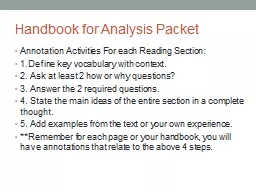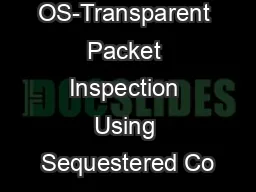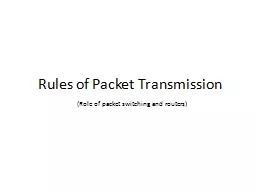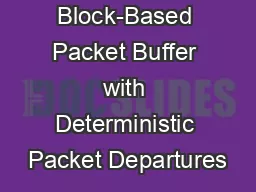PPT-Handbook for Analysis Packet
Author : min-jolicoeur | Published Date : 2017-08-28
Annotation Activities For each R eading S ection 1Define key vocabulary with context 2 Ask at least 2 how or why questions 3 Answer the 2 required questions 4
Presentation Embed Code
Download Presentation
Download Presentation The PPT/PDF document "Handbook for Analysis Packet" is the property of its rightful owner. Permission is granted to download and print the materials on this website for personal, non-commercial use only, and to display it on your personal computer provided you do not modify the materials and that you retain all copyright notices contained in the materials. By downloading content from our website, you accept the terms of this agreement.
Handbook for Analysis Packet: Transcript
Download Rules Of Document
"Handbook for Analysis Packet"The content belongs to its owner. You may download and print it for personal use, without modification, and keep all copyright notices. By downloading, you agree to these terms.
Related Documents














